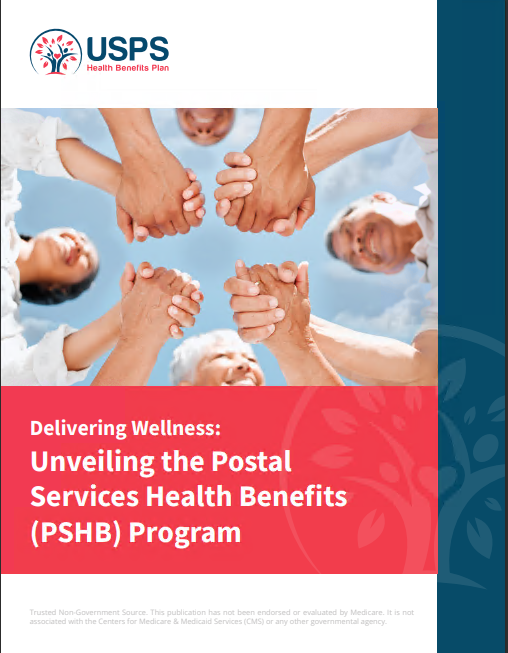Key Takeaways
-
Medigap premiums can significantly affect your overall Postal Service Health Benefits (PSHB) coverage and expenses, making it important to evaluate your healthcare needs and budget before enrolling.
-
Understanding how Medigap interacts with PSHB, including costs, coverage, and Medicare integration, helps you make informed decisions about your healthcare options.
How Medigap Premiums Influence Your PSHB Coverage
If you’re a Postal Service retiree or soon-to-be retiree, you may be weighing your healthcare options under the Postal Service Health Benefits (PSHB) program. One critical factor to consider is how Medigap premiums impact your overall benefits, out-of-pocket expenses, and long-term healthcare strategy. With Medigap offering supplemental coverage for Medicare, understanding how it aligns with your PSHB benefits ensures you’re getting the best value for your healthcare dollars.
1. The Relationship Between PSHB and Medigap
PSHB is designed to provide comprehensive healthcare coverage for Postal Service employees and retirees. However, when you become eligible for Medicare at age 65, PSHB integrates with Medicare, meaning your plan options and costs may change. Medigap, also known as Medicare Supplement Insurance, can help cover expenses such as deductibles, copayments, and coinsurance that Medicare alone doesn’t pay.
While PSHB plans often provide robust coverage, adding a Medigap plan could either reduce or increase your total costs depending on premium amounts, coverage benefits, and out-of-pocket savings. Evaluating these factors helps determine whether Medigap is a worthwhile addition to your healthcare strategy.
2. Medigap Premiums and Your Monthly Healthcare Budget
Medigap plans require monthly premium payments, and these premiums vary based on factors like age, location, and plan type. Since you’ll also be paying for PSHB premiums, Medicare Part B premiums, and prescription drug costs, it’s essential to assess how adding a Medigap plan fits into your budget.
Some key financial considerations include:
-
Can you comfortably afford Medigap premiums in addition to PSHB and Medicare costs?
-
Are the cost savings on out-of-pocket expenses worth the extra monthly payment?
-
How will your premiums change over time?
Medigap premiums generally increase with age, and some pricing models charge higher rates as you get older. Be sure to compare these costs with what PSHB already covers to determine if the added expense makes sense for you.
3. Medigap’s Impact on Out-of-Pocket Costs
One of the main reasons retirees consider Medigap is its potential to lower out-of-pocket healthcare expenses. Since Medicare alone does not cover all costs, Medigap can help reduce expenses related to:
-
Hospital stays beyond Medicare’s covered days
-
Skilled nursing facility coinsurance
-
Excess charges from doctors who don’t accept Medicare’s standard rates
However, your PSHB plan might already cover many of these expenses. Before committing to a Medigap policy, compare the benefits with your current PSHB coverage to avoid unnecessary overlap. If your PSHB plan includes strong secondary coverage, you may not need a Medigap policy at all.
4. How Medigap Affects Prescription Drug Coverage
Medigap does not include prescription drug coverage, so if you choose a Medigap plan, you’ll need to enroll in a Medicare Part D plan separately. If you have PSHB, your plan may already provide strong prescription drug benefits, potentially making a standalone Part D plan unnecessary.
Consider the following:
-
Does your PSHB plan cover prescription drugs comprehensively?
-
Would a Medicare Part D plan be a better fit alongside Medigap?
-
Are your medications covered at a lower cost under PSHB compared to Medicare Part D?
Adding Medigap means balancing your coverage between Medicare, PSHB, and possibly Part D, ensuring you don’t overpay for redundant benefits.
5. The Long-Term Financial Considerations of Medigap and PSHB
Thinking long-term is crucial when deciding whether Medigap is right for you. Some factors to consider include:
-
Future premium increases: Medigap costs rise over time, while PSHB costs are partially covered by government contributions.
-
Healthcare needs as you age: If you anticipate higher medical expenses later in life, Medigap could provide financial relief, but PSHB might already meet these needs.
-
Switching between plans: Enrolling in Medigap at a later age may come with underwriting requirements, meaning you might not be guaranteed coverage if you wait too long.
If you already have a PSHB plan that integrates well with Medicare, Medigap might not be necessary. However, if your PSHB coverage is limited in areas like hospital costs or coinsurance, Medigap could be a beneficial addition to your healthcare coverage.
Evaluating Your Best Coverage Option
When deciding whether to add Medigap to your PSHB coverage, ask yourself these key questions:
-
What does my PSHB plan cover after Medicare pays its portion?
-
How much will I actually save by enrolling in Medigap?
-
Do I need additional coverage for expenses like deductibles and excess charges?
-
Will my total healthcare costs (including Medigap premiums) be lower than paying out-of-pocket?
Since PSHB already provides significant benefits, Medigap may not always be necessary. The best approach is to carefully review your PSHB plan benefits and compare them to Medigap options to see if the additional coverage is worth the expense.
Making an Informed Decision
Medigap can offer peace of mind by reducing unexpected healthcare costs, but it comes with additional premiums that may or may not be necessary depending on your PSHB coverage. The key to making the right choice is understanding the full scope of your benefits and ensuring that any additional coverage you purchase is truly beneficial.
By assessing how Medigap interacts with PSHB and Medicare, you can determine whether the additional cost is justified. Keep in mind that once you enroll in Medigap, you may be locked into a higher premium structure as you age, making it even more essential to weigh your options carefully.
If you’re unsure about the best choice for your needs, getting in touch with a licensed agent listed on this website can help. They can provide personalized guidance on PSHB, Medigap, and Medicare, ensuring you choose the best plan for your healthcare and budget.











